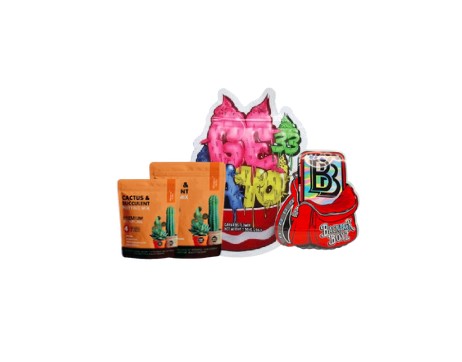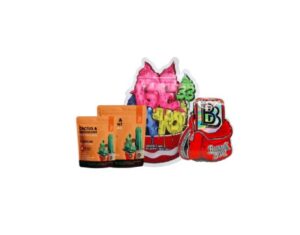Full Body Harness vs Safety Belt: Which Meets Industrial Standards?
For decades, safety belts were considered the primary means of protection while working at height. But as industrial operations evolved, safety standards became stricter — and so did the expectations for worker protection.
Today, the full body harness has replaced traditional safety belts across industries worldwide. Why? Because it offers greater coverage, better shock absorption, and compliance with international fall protection regulations.
Indian Inovatix, a leading manufacturer, supplier, and fall protection specialist, designs certified full body harness systems that meet global standards and address the safety challenges of modern worksites.
Let’s understand how full body harnesses differ from safety belts, and why your organization should choose systems that meet today’s industrial safety requirements.
Understanding the Basics
What Is a Safety Belt?
A safety belt is a simple device worn around the waist, used primarily for positioning or limited fall restraint. It prevents a worker from reaching an unprotected edge but doesn’t provide full-body support during a fall.
Components:
-
Waist belt with buckle
-
Single D-ring at the back or side for lanyard attachment
Limitations:
-
Concentrates fall forces on the waist and lower back
-
Can cause severe injury during sudden impact
-
Not compliant with modern fall arrest standards
What Is a Full Body Harness?
A full body harness is a comprehensive fall arrest device designed to distribute fall forces evenly across the shoulders, thighs, and pelvis.
It connects the worker to a lifeline or anchor through multiple D-rings and shock absorbers.
Components:
-
Shoulder straps
-
Leg straps
-
Chest strap
-
Dorsal D-ring for fall arrest
-
Optional side or front D-rings for positioning or rescue
Advantages:
-
Even weight distribution reduces injury risk
-
Keeps worker upright after fall arrest
-
Certified for both restraint and fall arrest applications
Key Differences Between Full Body Harness and Safety Belt
| Feature | Safety Belt | Full Body Harness |
|---|---|---|
| Coverage | Waist only | Full upper and lower body |
| Fall Arrest Capability | Limited / None | Designed for full fall arrest |
| Force Distribution | Localized on waist | Evenly distributed across body |
| Comfort for Long Use | Limited | Ergonomic and adjustable |
| Compliance Standards | Outdated | Meets EN 361, IS 3521 |
| Safety Level | Basic | Certified and advanced |
Modern industrial safety standards no longer recommend safety belts for fall arrest applications. Instead, full body harness systems are the global benchmark for height safety compliance.
Why Full Body Harness Systems Meet Modern Industrial Standards
1. Enhanced Safety Design
Full body harnesses include dorsal and side D-rings, shock absorbers, and high-strength webbing that reduce fall impact forces.
2. Compliance with Global Regulations
Certified under EN 361, EN 358, and IS 3521, these harnesses meet OSHA and BIS fall arrest standards required for EPC and industrial projects.
3. Worker Comfort and Productivity
Modern harnesses are designed with padded straps and breathable materials that allow workers to perform longer tasks comfortably.
4. Durability and Reliability
Harnesses by Indian Inovatix are made from UV-resistant webbing and anti-corrosive fittings, ensuring consistent performance in harsh environments.
5. Multi-Application Usage
Unlike safety belts, full body harnesses are suitable for fall arrest, work positioning, rescue, and confined space applications.
Why Safety Belts Are No Longer Recommended
Safety belts were once popular due to their simplicity, but they fail to protect against dynamic falls.
In a fall event, the belt’s narrow design causes high pressure on the abdomen and spine — often resulting in internal injuries or suspension trauma.
Regulatory bodies such as BIS, EN, and OSHA have discontinued the use of safety belts for fall arrest purposes, mandating full body harness systems instead.
Indian Inovatix Full Body Harness Systems
Indian Inovatix manufactures and supplies certified full body harness systems engineered to exceed performance standards in industrial safety.
Key Features:
-
High-strength polyester webbing
-
Ergonomic design for extended wear
-
Multiple D-rings for flexibility
-
Certified as per EN 361, EN 358, and IS 3521
-
Available in multiple models for different industrial applications
Every harness is tested for load capacity, corrosion resistance, and comfort, ensuring unmatched reliability on-site.
Industrial Use Cases for Full Body Harness Systems
1. Construction and EPC Projects
Workers on scaffolds, beams, and structural frames face a constant risk of falls.
A full body harness connected to a certified anchorage or lifeline provides continuous protection during movement and positioning.
2. Power Generation and Energy
Technicians climbing turbines, towers, or transformers require all-direction support.
Harnesses by Indian Inovatix maintain stability during ascent and descent while preventing suspension trauma after fall arrest.
3. Oil, Gas, and Petrochemical Plants
These environments demand high-performance harnesses resistant to heat and chemical exposure.
Indian Inovatix systems use specialized webbing and hardware tested for harsh industrial conditions.
4. Manufacturing and Maintenance
For overhead crane servicing, conveyor inspection, and plant upkeep, full body harnesses ensure safe access at height and compliance with internal safety audits.
5. Infrastructure and Telecom
Workers on bridges, towers, and solar installations benefit from ergonomic designs that reduce fatigue and enable long work cycles.
Inspection and Maintenance Best Practices
A certified full body harness remains effective only when inspected and maintained properly.
Follow these essential practices to ensure ongoing reliability.
Before Each Use
-
Visually inspect webbing for cuts, burns, or fraying.
-
Check buckles, D-rings, and grommets for corrosion or cracks.
-
Verify that stitching and labels are intact and legible.
Periodic Inspection
-
Conduct detailed inspections every 3–6 months by qualified safety personnel.
-
Replace components showing wear, deformation, or UV degradation.
-
Maintain inspection logs for audit and compliance documentation.
Storage Guidelines
-
Store harnesses in a dry, ventilated space away from sunlight, oil, or chemicals.
-
Hang harnesses vertically to retain webbing shape.
-
Avoid folding under heavy objects.
Replacement Policy
Any harness that has arrested a fall, or shows damage, must be removed from service immediately.
Typical replacement cycles range between 3–5 years based on usage and environment.
Mini Case Study: Harness Upgrade for a Telecom Tower Project
A telecom contractor operating multiple communication towers across Maharashtra relied on outdated waist belts for tower maintenance. Safety compliance audits flagged the issue as non-conformant.
Challenge: Replace legacy safety belts with compliant fall protection systems without halting ongoing operations.
Solution:
Indian Inovatix supplied EN 361-certified full body harness systems featuring dorsal and front D-rings for vertical mobility.
Technicians received on-site training on correct usage and inspection.
Outcome:
-
Zero fall-related incidents in 16 months
-
Faster maintenance cycles due to improved comfort
-
Full compliance with BIS and client safety audits
This case illustrates how modern harness systems enhance both safety and operational efficiency.
FAQs (Snippet-Ready)
1. Which is safer — a safety belt or a full body harness?
A full body harness. It distributes fall forces evenly and complies with modern safety standards, unlike belts that focus pressure on the waist.
2. Can safety belts still be used for fall arrest?
No. Safety belts are obsolete for fall arrest and only suitable for limited restraint tasks.
3. What standards govern full body harness systems?
EN 361, EN 358, and IS 3521 define design, testing, and performance criteria.
4. How often should harnesses be inspected?
Before every use and formally every 3–6 months by a trained inspector.
5. Can one harness fit different workers?
Yes, adjustable harnesses accommodate multiple users when correctly fitted.
6. When should a harness be replaced?
After 3–5 years of use or immediately after a fall or visible damage.
7. What materials are best for industrial harnesses?
High-tenacity polyester or polyamide webbing with stainless or galvanized fittings.
8. Why are safety belts being phased out?
They fail to meet current fall arrest standards and can cause internal injury during a fall.
9. Do full body harnesses require training?
Yes. Training ensures correct fitting, connection, and rescue response.
10. Why choose Indian Inovatix?
Because Indian Inovatix manufactures and supplies certified, durable, and ergonomic fall protection systems trusted across India’s industrial sectors.
Conclusion
Industrial safety standards have evolved — and so must the equipment protecting your workforce.
While safety belts once served as basic restraint tools, they cannot provide the protection required in modern worksites.
A full body harness is now the benchmark for certified fall protection, combining comfort, reliability, and compliance with international norms.
Indian Inovatix, a leading manufacturer, supplier, and specialist, designs and delivers full body harness systems built for real-world industrial challenges.
Each model is tested for strength, comfort, and long-term durability to keep your teams secure at height.
Every worker deserves safety. Replace outdated safety belts with certified full body harness systems from Indian Inovatix.
Enquire now for bulk pricing, request a quote, or customize your harness solution today.













